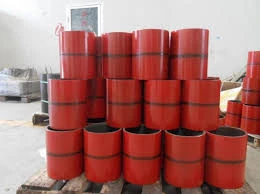coupling tube fitting
Understanding Coupling Tube Fittings A Comprehensive Guide
In the realm of fluid and gas transfer systems, coupling tube fittings play a vital role in ensuring that connections between tubes, pipes, and other components are secure and leak-free. These fittings are essential in various industries, including automotive, aerospace, manufacturing, and plumbing. This article explores the significance, types, installation methods, and advantages of coupling tube fittings.
What are Coupling Tube Fittings?
Coupling tube fittings are specialized components designed to join two tubes or pipes together. They provide a means to connect, disconnect, and change the direction of fluid flow. These fittings can be made from various materials, including stainless steel, brass, and plastic, depending on the application requirements, such as pressure ratings, temperature, and chemical compatibility.
Types of Coupling Tube Fittings
1. Compression Fittings These fittings join tubes by using a compression nut and ring. When the nut is tightened, it compresses the ring around the tube, creating a seal that prevents leaks. Compression fittings are popular due to their ease of installation and ability to accommodate various tube sizes.
2. Solder Fittings Commonly used in plumbing, solder fittings are connected by melting solder to bond the fitting to the tube. This type of fitting provides a strong and permanent connection but requires skilled labor and specific tools.
3. Threaded Fittings These fittings feature male and female threads that can be screwed together. They are commonly used in applications where disassembly is necessary. However, they can be susceptible to leaks if not properly sealed.
4. Quick Disconnect Fittings These fittings allow for rapid connections and disconnections without the need for tools. They are widely used in applications that require frequent changes, such as hydraulic systems or laboratory setups.
5. Flared Fittings Used primarily in high-pressure applications, flared fittings have a cone-shaped end that is flared outward to create a tight seal against the fitting's mating surface.
Installation of Coupling Tube Fittings
coupling tube fitting

Proper installation of coupling tube fittings is crucial to ensure their effectiveness and longevity. Here is a general step-by-step guide for installing compression fittings
1. Cut the Tube Ensure that the tube is cut squarely and is free from burrs. A clean edge helps enhance the seal.
2. Slide on the Nut Before inserting the tube into the fitting, slide the compression nut onto the tube.
3. Insert the Tube Push the tube into the fitting until it reaches the shoulder.
4. Add the Ferrule Place the compression ring (ferrule) next to the fitting.
5. Tighten the Nut Use a wrench to tighten the nut onto the fitting. It’s essential to apply consistent pressure, ensuring a tight seal without over-tightening, which can damage the fitting.
Advantages of Coupling Tube Fittings
Coupling tube fittings offer a myriad of benefits, including
- Versatility They can be used with a variety of tube sizes and materials, making them adaptable for different applications. - Ease of Use Many types of fittings allow for quick installation and disassembly, minimizing downtime for repairs and maintenance. - Leak Prevention A well-installed coupling tube fitting provides a reliable seal, significantly reducing the risk of leaks that can lead to costly repairs and safety hazards. - Cost-Effective With the right choice of fittings, long-term durability and minimal maintenance needs can result in cost savings over time.
Conclusion
In conclusion, coupling tube fittings are essential components in various industries where the transfer of fluids and gases is required. Understanding the different types of fittings, their installation methods, and advantages helps users make informed decisions to ensure the efficiency and safety of their systems. As technology advances, the designs and functionalities of coupling tube fittings will continue to evolve, further enhancing their importance in modern engineering applications.
-
Tubing Crossover - API Compatible, Custom Sizes, In StockNewsNov.10,2025
-
Tubing Coupling | High-Strength, Leak-Proof Steel CouplingsNewsNov.10,2025
-
Wholesale API Threading Casing Coupling | API 5CT, Fast ShipNewsNov.10,2025
-
Pup Joint Supplier | API Certified, Custom, Quick ShipNewsNov.10,2025
-
Pup Joint Manufacturers | Precision Machined, Fast DeliveryNewsNov.10,2025
-
Tubing Coupling | Precision Steel, Leak-Proof, Fast DeliveryNewsNov.03,2025







